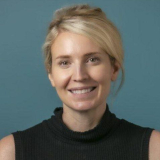The University City Science Center’s purpose is to make the world a better place by freeing great ideas from the confines of the laboratory, and moving promising research to the next stage on the pathway to commercialization.
Those great ideas could be the next treatments or cures for rare diseases, or technologies that can improve our quality of life in various ways. They move along the commercialization pathway thanks to the work of entrepreneurs, many of whom are affiliated with academic research institutions. But they are unable to come to fruition without adequate resources and support.
Located in Philadelphia, the University City Science Center provides resources and programming for any stage of the business lifecycle.
“The Science Center has been supporting innovation and technology commercialization since 1963,” says President and CEO Steve Zarrilli. “As the needs of entrepreneurs have evolved over the last five decades, so too have our offerings. But at the core of it, our mission remains the same: to support innovation, drive commercialization and bring life-changing technologies to market.”
The Science Center supports startups, research and economic development in the life sciences, healthcare, physical sciences and emerging technology sectors, providing a continuum of resources including funding, work space and connections. Together, companies that have received business incubation support from the Science Center account for one out of every 100 jobs in the greater Philadelphia region and drive $13 billion in annual regional economic activity.
The Science Center’s 31 shareholder institutions are comprised of academic and healthcare institutions across Pennsylvania, New Jersey and Delaware. The ability of those institutions to commercialize important research being done in their laboratories depends on the depth and breadth of their resources. The University of Pennsylvania, for example, has its own in-house team dedicated to commercializing technologies that are discovered in its laboratories. Smaller schools, however, do not necessarily have this expertise at their fingertips.
“One of the key functions we serve,” says Zarrilli, “is to assess the gap in resources between concept and commercialization, and determine where the Science Center can help and work in parallel with the institution. Some schools don’t have their own technology transfer office, while other institutions are ahead of the curve and have even set up their own venture funds.”
The Science Center has moved beyond its local origins, with relationships now in place with other institutions such as Pennsylvania State University and the University of Pittsburgh, and it is evaluating select business opportunities beyond the region. “We will look to find the right pieces to accelerate the technologies in our portfolio wherever they are located,” says Zarrilli.
“Spreading resources too thin is always a concern,” he adds, “so we run things in parallel. Fundraising, for example, is planned and executed at the same time technology is being developed. It’s important not to dilute the process before we have the proper resources to manage a new startup.”
Not only working with startups, the Science Center also partners with well-established biotechnology leaders. Recently, the Science Center and the world’s fifth largest biotechnology company, CSL Behring, entered into a partnership agreement to identify and help commercialize potential new medicines being researched at the Science Center’s academic partner institutions.
Through this new collaboration, the Science Center’s framework for technology commercialization, services and support, which starts with the QED Proof-of-Concept Program that advances scientific breakthroughs, is providing the support and infrastructure for CSL Behring to efficiently evaluate promising technologies from multiple institutions.
“Researchers have been invited to submit proposals for projects with a focus on therapeutics that fit within CSL Behring’s areas of expertise, including inflammatory and autoimmune diseases; hematological and coagulation disorders; transplantation; cardiovascular and metabolic diseases; respiratory diseases; and neurological disorders,” says Andrew Nash, CSL’s Senior Vice President of Research. “The initial response was promising,” he adds, “with more than 39 preliminary proposals submitted by researchers at nine institutions, exceeding our expectations.”
Altogether, awarded projects will receive a total of up to $250,000 in research funding from CSL Behring, together with scientific and in-kind support including reagent generation and consultancy on drug development strategy. The partner institution will contribute up to another $50,000.
The possibilities for commercializing breakthrough medicines and technologies are exciting, particularly in areas such as precision medicine and gene therapy. The Science Center is uniquely positioned to play a key role in freeing great ideas from the confines of the laboratory, and helping innovators take their discoveries from idea to initial public offering.
